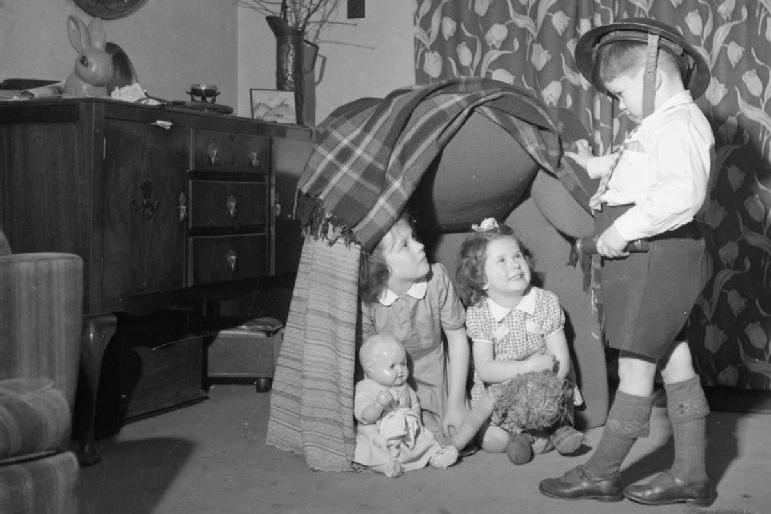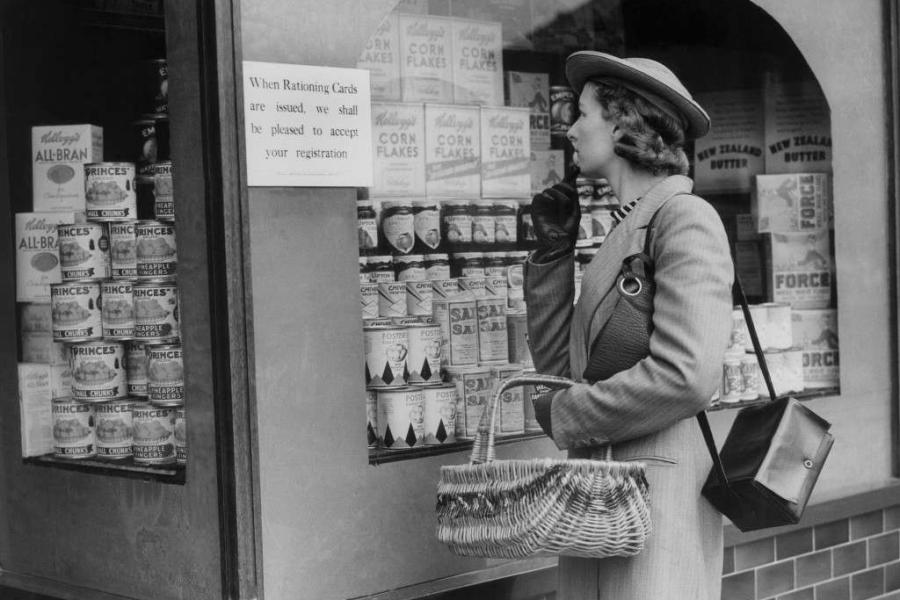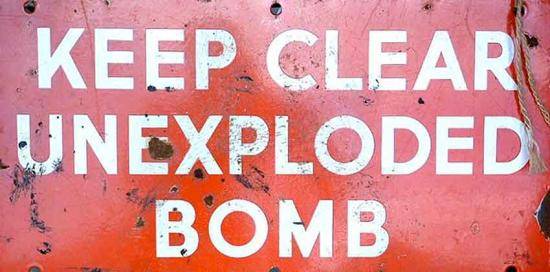
A Fulham resident called Mrs Diamond (her first name was not recorded) set down her Second World War memories for a BBC project 16 years ago, to create a lasting record of what life was like on the home front.
Picture how things would be if you had to take a flask of hot tea to an air raid shelter, night after night, while bombs rained down!
Born in Fulham, she was raised by her aunt and uncle, Charlotte and Bill. Bill worked as a greengrocer, and had three horses which pulled carts laden with fruit and veg around the streets of SW6 in the late 1930s.
Aged 11 at the outbreak of the Second World War in 1939, she helped look after the horses when Uncle Bill was called up to serve in the forces. She mixed the horses' food, groomed and harnessed them.
"I went out to do some errands, and saw that the sky was full of great big silver balloons, like enormous sausages with three big ears at the back," she recalled. "They were barrage balloons, and were based in every park or open space, preventing enemy planes from dive-bombing the people.
"Early in 1939 everyone was issued with a gas mask, made of rubber with straps that went over your head and held it close to your face. For the next few months everything went on as usual. Then in January 1940 rationing started. Bacon, tea, sugar, butter, margarine and eggs were the first foods to be rationed, and you had to register with the shop of your choice.
"We went to Covent Garden Market three times per week to buy produce. There was nothing coming from abroad, only home-grown produce.

Night time bombing raids
"I joined the St John Ambulance Brigade cadets learning first aid and basic nursing at classes held in a local hall. By August, German bombers were coming over every day and there were lots of battles going on in the skies over London.
"Shops put up boards outside with posters on like a cricket score: how many German planes had been shot down and how many of our planes were lost.
"By September the Germans had changed to night bombing. Every night they came, so everything had to be done before 6pm, as you knew they would arrive soon after.
"We made sandwiches and filled Thermos flasks and moved our bedding into the shelter and slept there. When it was bad we took it in turns to sleep.
"The main problem, apart from the bombs, was shrapnel from the anti-aircraft shells which, after exploding, fell to the ground - jagged pieces of metal up to 10in long. They could cause a very bad injury if they hit you.

"Our nearest bomb was about 200 yards away. It demolished three houses and badly damaged the two on either side. Some of the people had gone to spend the night in one of the deep underground stations, and some were in the shelters. Neighbours and the rescue service dug those who still remained in the houses out. They were injured, but nobody died. It was the most awful mess.
"We lost our front windows, a lot of plaster came down from the bedroom ceiling and shrapnel came through the roof onto the beds.
"More people were going to the tube stations each night or stayed where they felt safest - under a heavy kitchen table, or in the cupboard under the stairs. You had to tell the warden where you were, so they knew where to look for you if you got a direct hit.
"Most important was your shelter bag. Everybody had one, containing your rent book, ration books, identity cards, photos of the family, birth and marriage certificates and any special keepsake. And, most important, the insurance policies! Even very poor people paid insurance, a penny per week for each child and twopence each for mum and dad. No Londoner would let any member of their family have a pauper's funeral. The bag was taken everywhere.
"Being close to the gas works, the Shell Mex depot (one of the largest petrol depots in London), Fulham power station, the railway and the river, we got our share of bombing.
"On the Sunday after Christmas, we in Fulham had many hundreds of incendiary bombs. They were 12in cylinders and I think about 100 were packed in a container which the plane dropped.
"When the container hit a hard surface such as a road or a roof, it burst and showered the bombs everywhere. They fell and started burning. If you got to them quickly with a shovel of sand or earth, they were extinguished. If they fell on a roof, you could go up a ladder and pull them off into the garden with a rake, but once the roof caught fire you could do nothing.
"On one terrible night, the stables caught fire. They managed to get the horses out, but couldn't save the carts, vans and equipment. We could see lots of fires burning, and a big red glow in the sky towards Chelsea. It was the worst night I can remember."